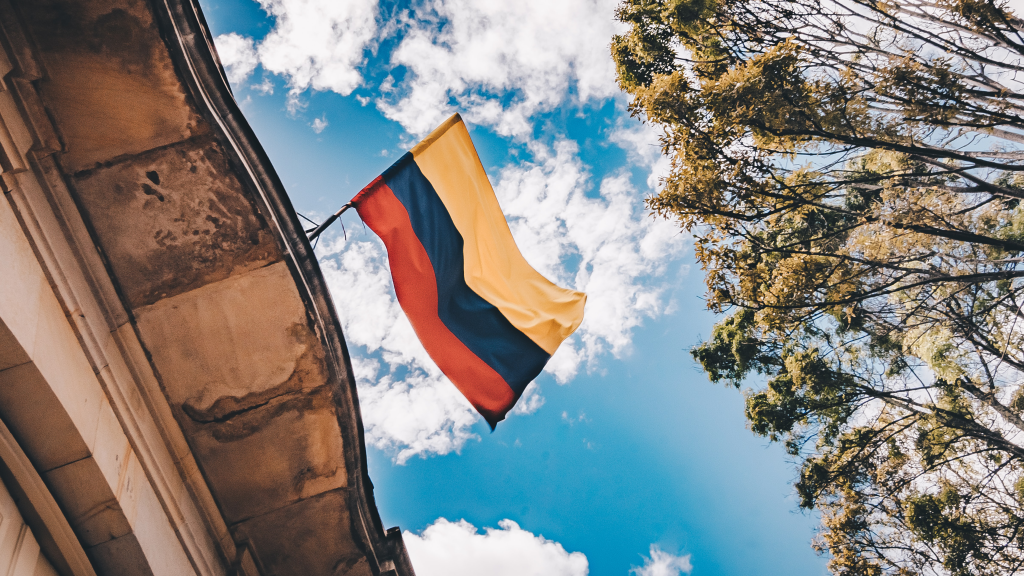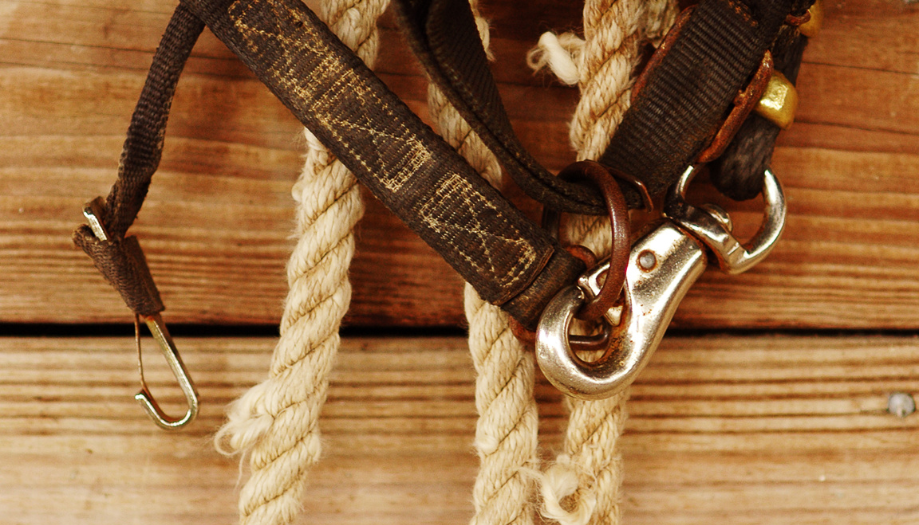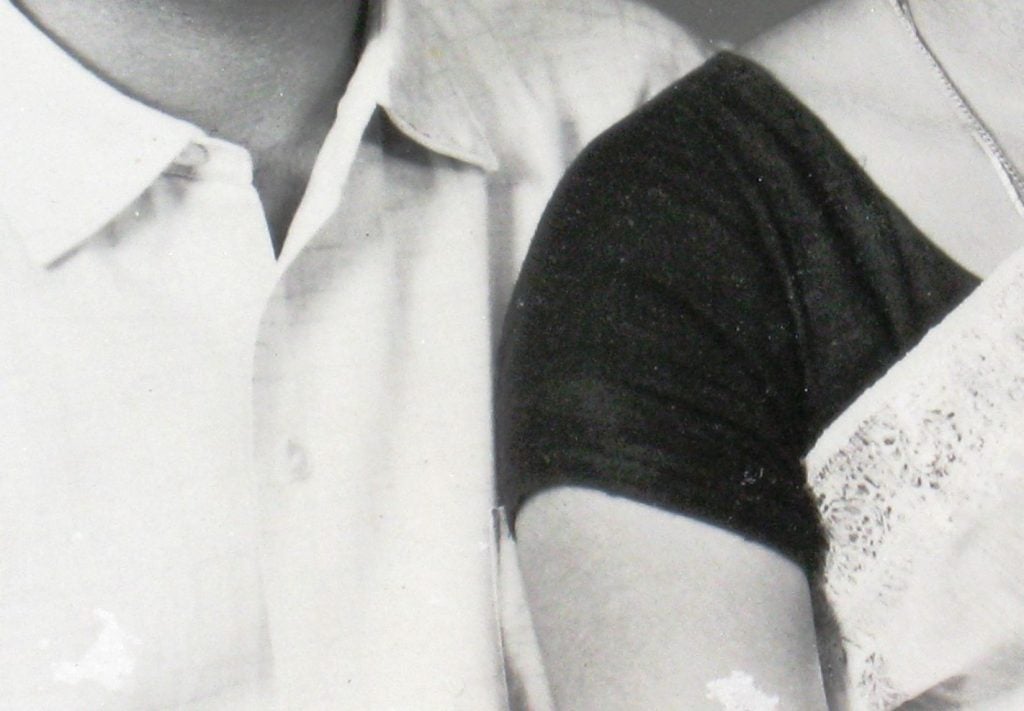Why I Chose It: MQR Reader Urvi Khumbat introduces Naomi Shuyama-Gómez’s “The Commander’s Teeth,” which appears in our Fall 2021 Issue. You can purchase it here.
In “The Commander’s Teeth,” the protagonist—a dentistry student named Emilia—is confronted with the possibility of vengeance. As the title suggests, Emilia finds herself in close proximity with the teeth of a feared commander. “A mouth is like an autobiography,” Shuyama-Gómez writes, with her startling ability to turn details about dentistry into polished gems of beauty and despair. A charged encounter unfolds between Emilia and the FARC commander in the Colombian landscape of the 90s, yet the story is less about the commander and more about Emilia’s fraught intimacy with the local Lorenzo. Though the relationship is presented, at first, as an arrangement of convenience, the story betrays more affection than Emilia cares to admit.
Violence and terrible loss haunt the story, skulking around its edges. Attempts at both repair and destruction coexist, the boundaries between them blurring. Every moment teeters within its own precarity, as the reader feels the fragility of everything—the no-frills sex between Emilia and Lorenzo, the memory of Emilia’s old lover whose name spills like “a glow over everything,” the mouths “like open graves,” the bodies that wash up on the river’s shores to be mourned by strangers. This story outlines each absence with painstaking detail, constructing a world of missing parts and phantoms heavy with grief.
A sense of oppressive decay permeates and bookends the narrative, and yet, the kindness and vitality of ordinary people shine through in Shuyama-Gómez’s thoughtful writing. One injured man describes the rubber pellet that hit his eye as “a red flower forced to bloom open.” In this story, even minor characters have the opportunity to speak, to write their own lives. I chose “The Commander’s Teeth” not only for its deft plot; its play with collective and personal memory; and its sensuous, tactile language; but also for the force of its longing. Longing for what, exactly?
We never find out—the story rests in a place of ambiguity and irresolution, of surrender to the world. The commander, post-extraction, wonders “how these wounds can be good,” and we wonder with him, left in the tender gaps where his teeth used to be.
The Commander’s Teeth
Over the months, I’ve developed a uniform and a routine; my barrack rises at five a.m. and I tuck old jeans into even older boots. I stretch stiffened joints, shrug on the lab coat I’ve waited six years to wear, now yellowed from over-bleaching. We eat our breakfast standing up, waiting for the old ambulances to grind to a stop at the end of a footpath snaking around the barracks.
“Your Ferrari is here,” Lorenzo calls out.
We climb in the back, balancing gear, exhaustion, and canisters of pressed juice. Every morning Lorenzo, Omaira, and I follow the winding mountain roads to where we are stationed for the day. I’ve gotten so used to the bleating city traffic that the quiet rumble of the rural’s commute still unnerves me.
Omaira carries the conversation with Lorenzo while I watch the morning light leak through the panels of my fingertips curling around the grab handle dangling above my head. They say last night there were reports of increased FARC activity. My skull makes contact with Omaira’s chin when the ambulance brakes just in time for a lone Chiva bus collecting its passengers. It took some time for the three of us to be able to sit in silence comfortably, and longer still to develop camaraderie. Omaira had to first confront me about Lorenzo. She cornered me in the mess hall and asked if he was as bad a driver in bed as he was in the ambulance. I told her she should find out.
During our rural, the land we work is protected, secured by the military we sometimes hear marching along the road in single file. The young men, most of them drafted through mandatory service, patrol the mountains, and stir the vegetation as they wait for orders. Every twenty minutes we pass clusters of flattened rooftops thatched brown and tiled red, small islands of human intervention in contrast to the lush jungle.
Up in these mountains, orchid bees glint like black opals in the sun and when the Cauca river swells to a flood, farmers use zip lines to move across safely. The few villagers out on foot, sensing the ambulance, hardly glance up from their path as Lorenzo weaves around them. He has worked as a driver for years now, and if Omaira and I accompany him, we never have real trouble at the checkpoints. Yet, if I look too hard, I can see the movement of a different kind of uniform, underneath the dense foliage, like fish rippling just below the water.
Though we arrive late because of the stop-and-go ambulance, the community leader welcomes us with a smile. Sometimes it’s a tent, sometimes a villager’s home. This time a wilted finger offers us a concrete room with working lights and running water. “You’ll be setting up here.”
Lorenzo has been to this site before and knows the safest place to park the ambulance. He helps carry the equipment we’ve brought along into the bare room. The villagers think he is the dentist and children, several with hair rust-colored from malnutrition, follow behind him. Lorenzo motions to the locals who have gathered for medical attention, “For dental work only, please follow me.” He splits them into groups based on the level of emergency. At first, we had distributed comprehensive cards that asked patients to rate their pain and levels of discomfort. We passed around pamphlets showing the anatomy of a mouth and offered tips for preventative care. But it turned out the paper was better suited for tinder than instruction. Now, Lorenzo and the community leader take turns asking each person, “What is your name? How old are you? How much does it hurt and for how long?” They share a clipboard between them to note their findings. Later, I will use the clipboard to match the patients with procedures. While Omaira butters the floor in polish, I set up the instruments and test the faucet. The cleaning chemicals and sun heat up the room. Sweat skids across the fold of her elbow as Omaira works the mop.
When I worked in the trauma unit, I brought along a notebook. I didn’t want to forget how the patients described what had happened to them I wasn’t required to summarize or document their injuries according to standard medical terminology. Instead, I recorded. One patient characterized a rubber pellet fired at his eyeball as a red flower forced to bloom open. Another said she could feel the shards of ice grinding in her leg after a motorcycle crash. I noted other details of these encounters: how a patient’s mother taught me to use a poultice of milk bread to draw out splinters. An elderly woman tilted her head back and moaned softly as I searched through her scalp, parting her hair with my fingers to retrieve glass. A wife clutched me by the collar and asked if her husband would love her the same after we restarted his heart. Sometimes I circled close to understanding what they meant, but I still didn’t know how to receive these offerings.
Though the volunteer rotations often fell on national holidays when the hospitals were most short-staffed, I liked my shifts at the emergency ward better than the work in the rural. Visiting the city’s marketplace, among the street vendors in woven wild cane hats, I could be invisible. The vendors also prepared for surgery, expertly arranged their produce on low tables, and hawked samples of their ripest fruit. No one paid me mind while I sorted through the spill of produce as long as I kept a hat on, too, the one my mother had worn. A crowd afforded a degree of security, my parents had instilled in me.
It was made clear to me during the rural that I only knew what to do if they came to me in pieces; I was used to sliced fingertips, bullet holes, broken bones, smashed limbs, and allergic reactions. With equipment, I could stitch scalps shut. I always knew what was expected of me and wasn’t in charge. Here, in the villages, I look into mouths like open graves. I fill cavities, extract teeth, see them once and never again.
To read the rest of “The Commander’s Teeth,” you can purchase the Fall 2021 issue here.







